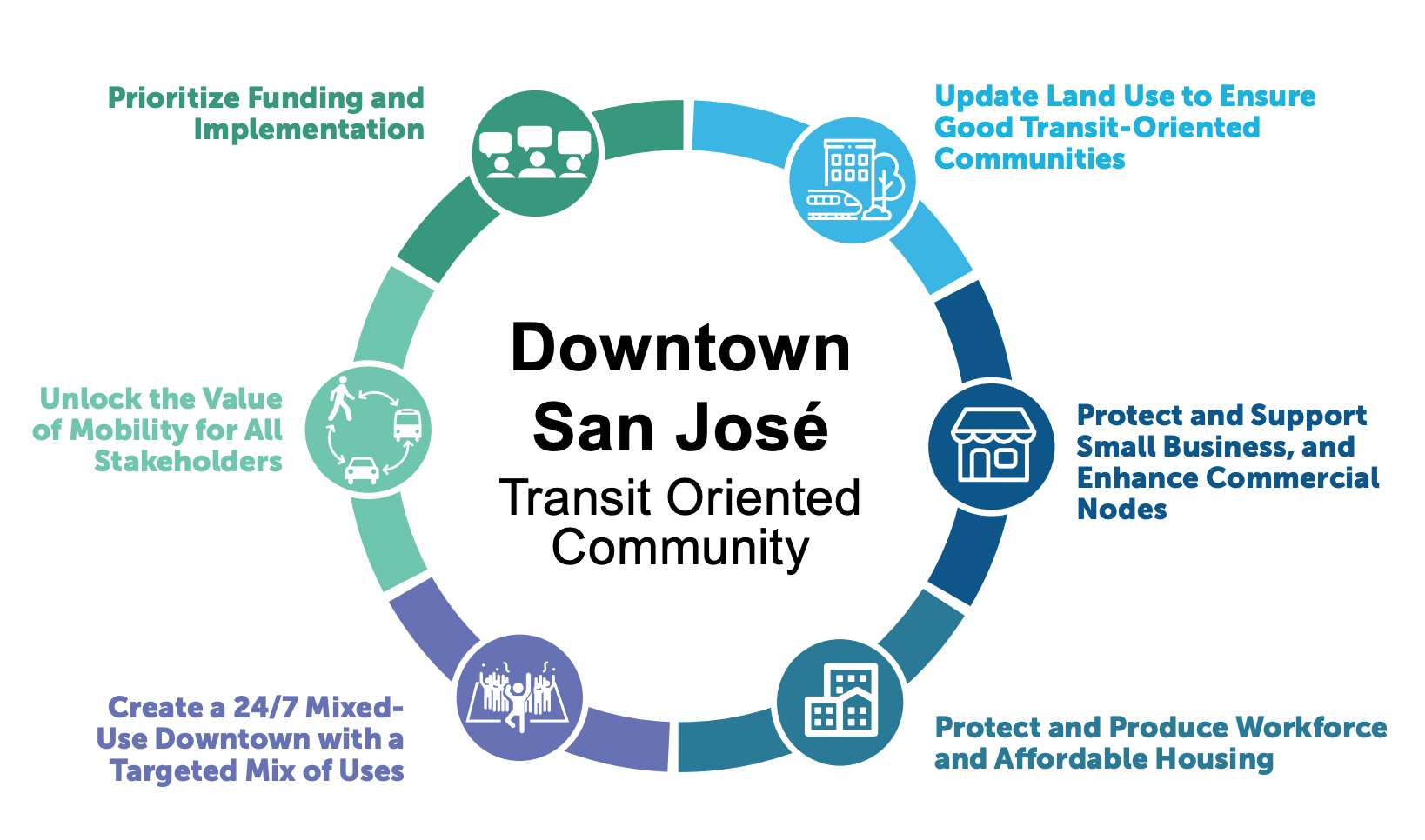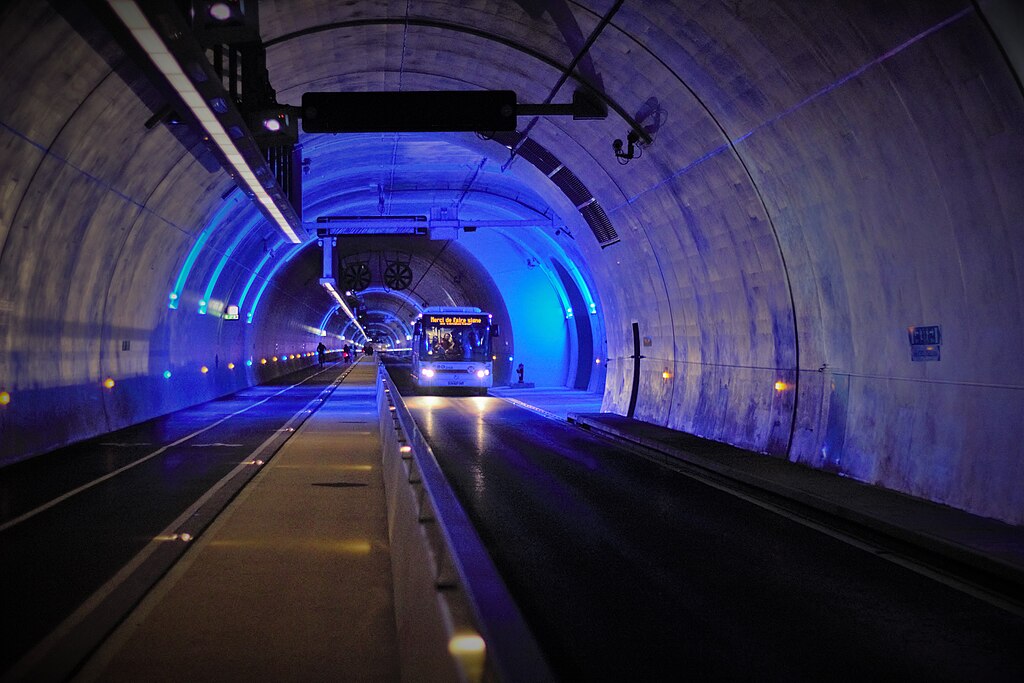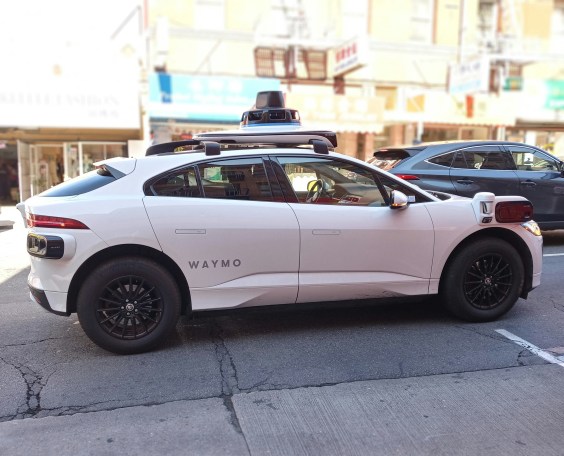Note: Metropolitan Shuttle, a leader in bus shuttle rentals, regularly sponsors coverage on Streetsblog San Francisco and Streetsblog Los Angeles. Unless noted in the story, Metropolitan Shuttle is not consulted for the content or editorial direction of the sponsored content.
Strip malls, acres of surface parking, single-use zoning and low density--too often cities build transit, but don't consider the land use around the stations. The result: ridership falls short of what it could be.
To avoid that pitfall for Phase II of the BART Extension (Segment 2) in the cities of Santa Clara and San Jose, VTA created "playbooks" for "transit oriented communities" that will guide planning around the stations. Segment 2 will not open to passengers until 2026 at the earliest, but the hope is by developing these playbooks in advance (including soliciting public comment) they can nurture and guide transit-appropriate land use ahead of the new BART service.
Comments for the Downtown San Jose TOC Playbook are due this Friday. The VTA heralds Segment 2 as "once in a century opportunity" to change the way these Silicon Valley cities grow. It's working with cities to get plans in place, make changes to their general plan documents, and begin to change transportation infrastructure in the areas surrounding the stations in Downtown San Jose, 28th Street Station in San Jose (Draft Playbook) and Santa Clara (Draft Playbook). Comments on any of the plans, including Downtown San Jose, can be emailed to vtabart@vtabsv.com.
“It’s a really great thing that VTA is getting involved in land-use policy and is working with cities, " said Aboubacar Ndiaye with Working Partnerships USA. "This is going to lead to a more climate-friendly future and a more walkable and livable city.”
For its part, VTA seems interested in bringing as many voices to the table as possible, and stresses that this Friday's deadline for comments isn't a hard-deadline. But they hope to be able to respond to comments sometime in the next month and a half and present the final TOC Playbook for Downtown San Jose to the City Council before the end of the year.
“We will still welcome comments on the Playbooks after the October 18 deadline. We want to get everyone’s comments - this isn’t an environmental review, the conversation will be ongoing,” explains Jill Gibson, the Planning and Outreach manager for VTA'S Bart PH II Extension Project.
As designed, the Playbooks aren't just guidelines and suggestions, but will also include language that, if passed by cities, will change local zoning and transportation planning. In other words, the playbooks are not plans designed to gather dust in an office or libraries, but be real-world guides to how these cities grow.
“The challenge that VTA is going to face is how exactly this vision is going to come to fruition. It’s going to require full buy-in from local governments," Ndiaye continued. "All the communities that are going to be impacted by BART Phase II need to be at the table."
The playbook starts with an overview of what is a Transit Oriented Community, a look at Downtown San Jose, and what can be done to achieve the goals of housing 40,000 jobs and 80,000 residences for people of all economic means along the Segment 2 Corridor.
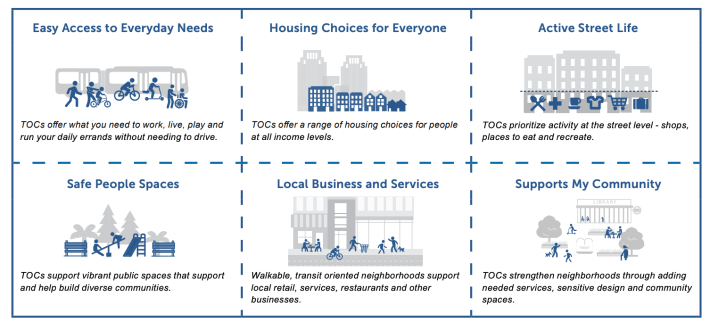
From there, the document lists six principals that guide the Playbook and the Big Moves that will be needed to make the playbook really work.
Prioritize Downtown as a walkable regional center: A stronger and more clearly defined Downtown core will help elevate and connect more people to existing civic and cultural institutions such as San Jose State University, San Pedro Square, and the Convention Center.
Invest in 24/7 vibrancy: High density development on the VTA block will help create vitality with a complementary mix of uses, energy and vitality. Champion the VTA Block, the intersection of Market Street and Santa Clara Street, the future location of the primary station entrance, and a major redevelopment site will become a major activity center in Downtown.
Leverage new development for public good: Continued downtown development will also help generate increased revenues for the City of San Jose, enabling the City to invest in an increased level of citywide services as well as in affordable housing, streetscape improvements, bicycle and pedestrian improvements.
Complement historic fabric: Continued downtown development will also help generate increased revenues for the City of San Jose, enabling the City to invest in an increased level of citywide services as well as in affordable housing, streetscape improvements, bicycle and pedestrian improvements. The visual impact of well-designed higher density development can complement downtown’s existing character, including the historic nature of many existing properties.
Maximize the opportunities to live and work downtown: Downtown is starting to attract unprecedented interest from new office developers and tenants as a result of the planned BART extension; proximity to the planned Google Village at Diridon; and recent residential development.
The principals and goals of the Playbook are used to inform the "Big Moves," the list of things San Jose, VTA and other stakeholders will need to do to make the Playbook a reality.
“At the heart of the study, it's about taking a holistic approach to each station area," says Gibson of the Playbook and the Big Moves. "This includes the land use strategies and multi-modal access improvements that are all necessary to foster vibrant, equitable, mixed-use station areas...in addition to that, it’s also about the funding and financing tools to help make this vision a reality."
The first Big Move is, "Update Land Use Across the Station Area to Ensure Good Transit Oriented Communities." The Playbook is very upfront that there are some real challenges, namely that gentrification is already occurring and the FAA has capped the size of buildings because of the proximity to the airport flight paths.
"It is an absolute worry," said Ndiaye of concerns that TOC could lead to gentrification. "This is why we worked hard for an initial assessment of existing housing conditions and what strategies would need to come into play to protect and increase housing stock as well as unique cultural resources."
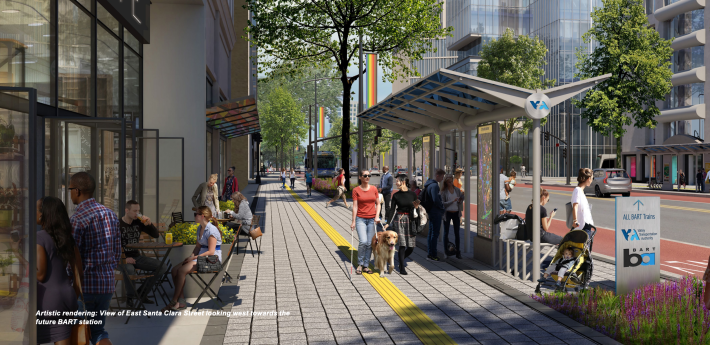
Many of these protections are spelled out in other Big Moves, but without them there is an ongoing concern that the density and office development will lead to displacing people who currently live near the new BART station locations.
The Playbook recommends new zoning around the stations, four different zones that encourage more density both in terms of housing and offices within a quarter mile of the station, with density moving down as one moves farther away from the station. While the Playbook can be passed later this year, there is another opportunity to turn the Playbook into law when San Jose updates the Envision San Jose General Plan (first passed in 2011), next year.
The next Big Move is to "Protect and Support Small Business and Enhance Commercial Nodes."
This Move is one of the keys to make sure the TOC doesn't become a vehicle for gentrification. VTA's strategy to minimize the impact of station construction on existing businesses is separate from the Playbook, but it still includes a 37 page guide to policies and procedures that can be used to protect the current business community. The text of the playbook itself is only 38 pages, and the guide is one of nearly two dozen that provides thousands of pages of research and details that offer a level of detail beyond what can fit into the Playbook itself
The list includes targeted loans and assistance, broadening the power of business associations, continue to market opportunity zone programs to businesses and make certain that owners are part of the discussions on how and when improvements and construction will come to the area.
But the biggest part of the plan to protect and support small businesses is to make sure the zoning and guides for new development provides appropriate space for small, locally owned businesses. The Playbook provides three bullet points for the actions the City of San Jose can take:
- Reduce commercial FAR requirements in mixed-use projects to make development more feasible, while also working with developers to provide space that is appropriate for small businesses in mixed-use projects.
- Provide developers with design guideline best practices for ground floor retail space in mixed-use buildings.
- Incentivize developers to provide tenant improvement allowances to small businesses.
The Playbook also offers different micro-plans for the two business districts that are near the future Downtown Bart Station: the Downtown Core and East Santa Clara Street. For the Downtown Core, the hope is that the new residents that will move to the new housing units will provide a local boost to the district which is struggling because of both a reputation that it is "not clean" and high rents for floor-level retail. For East Santa Clara Street, improving the pedestrian environment is seen as an opportunity to better connect to the Downtown Core.
Both of these Big Moves tie directly to the third one, "Create a 24/7 Mixed-Use Downtown."
This Big Move relies on zoning changes outlined in the two moves above, but also begins to discuss the changes needed to create a safer downtown for the people accessing and exiting the station and the new residents. The Big Move discusses the need to active first-floor uses, including offices and retail, but also houses a discussion of Vision Zero:
... stakeholders have identified a number of public realm challenges that negatively affect perceptions of the East Santa Clara Street, including limited parking for workers and businesses, a challenging pedestrian environment and lack of connections to the Downtown Core. Bicycle, pedestrian and transit improvements in the station area should be targeted at improving access to businesses as well as to the future BART station and other transit options.
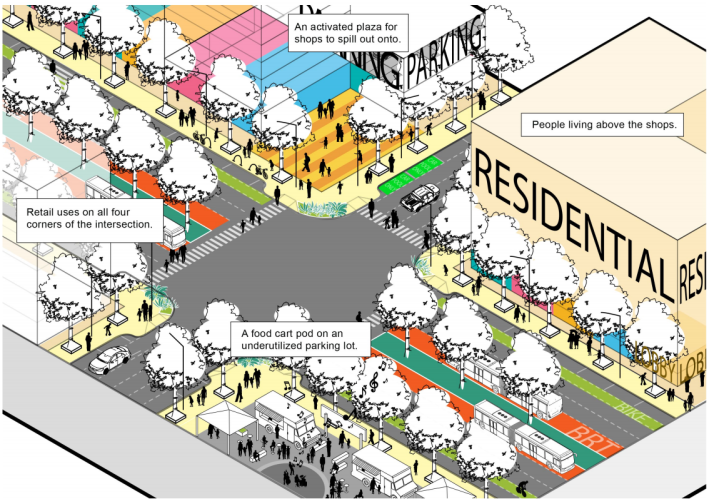
In addition to extensive community engagement, “a big part of our outreach program has been conducting one-on-one briefings (with stakeholders, including elected leaders),” explains Gibson. “We’ve also presented this twice at the VTA Board Meetings, most recently in September.”
Perhaps the most important Big Move, and one we discussed a little earlier, is to "Protect and Produce Workforce and Affordable Housing throughout the Station Area." Data in the Playbook shows the housing potential near the station is not nearly what it can be, just over 7,000 units are present but the area can support over 22,000 units. How San Jose protects existing residents, and meets its affordable housing goals, is going to decide whether or not the new BART Station becomes an engine for an improved economy or a tool for gentrification.
Activists think the Playbook is a good outline, but recognize a lot can happen when politics come into play. "We need to keep fighting to make sure these protections aren't jettisoned (later in the process)," writes Ndiaye.
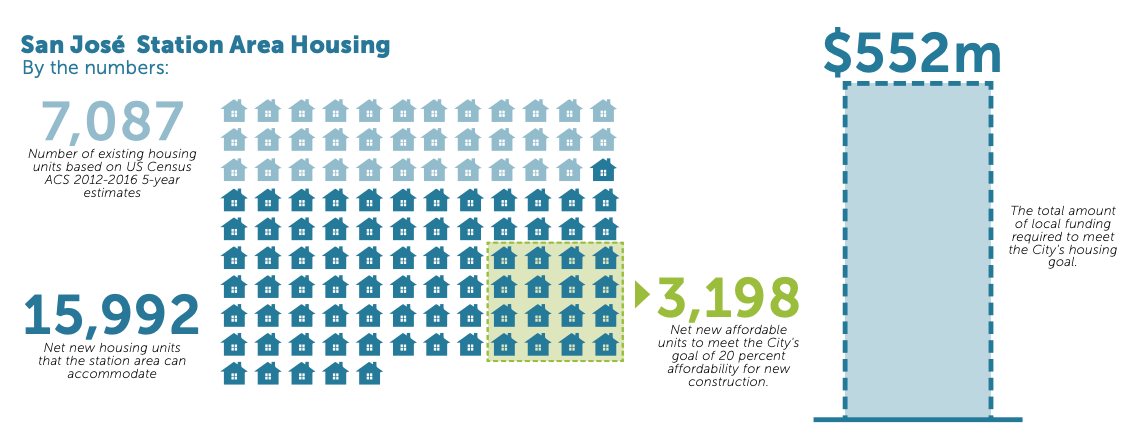
The action items for this part of the Playbook can be broken down to three parts: what policies need to be put in place to protect existing tenants, what policies need to be put in place to make the city's affordable housing goals, and what mix of government, bond and private funds can be brought together to meet these goals.
The next Big Move further clarifies what transportation improvements will be needed in the station area. "Unlock the Value of Mobility for All Stakeholders" outlines how car parking should be limited, streets should be reimagined and how transportation demand management can be used to incentivize non-motorized transportation through providing discounted transit, flexible working hours and preferences for car- and van-pooling.
Perhaps most exciting for Streetsblog readers would be the improvements that would come to local streets, should San Jose adopt the playbook:
- Install protected bike lanes and widen sidewalks on station access routes.
- Construct bulb-outs and install high visibility crosswalks within 1/4 mile of walkshed.
- Improve curb ramps to current ADA standards within 1/4 mile walkshed.
- Improve bicycle and pedestrian conditions at key intersections adjacent to the station.
- Install wayfinding signage along station access routes.
- Improve and implement transit priority on E. Santa Clara Street per General Plan to support the BART Station.
Earlier this month, Streetsblog spoke with VTA Chair Teresa O'Neill who warned that while VTA staff is working to change the culture around transportation, these changes aren't going to be easy.
"I hope we learned the lesson from the approach we used to take to planning," O'Neill stated. "Part of the challenge we’re facing in the pre-existing, already developed areas of the county is that this thinking wasn’t there in the planning. We’re learning how difficult it can be to put this infrastructure on top of a previously built-out environment."
The last of the Big Moves has to do with funding and is entitled "Prioritize Funding and Implementation." This move encourages the city to put staff in charge of specific moves and implementation strategies and to begin cultivating funding sources now and partners now, if they aren't already.
In addition to outlining the hundreds of millions of dollars that will be needed to make this Playbook a reality, the Move also includes case studies for different collaborations that have proven successful between transit agencies and local governments from San Francisco, to Denver to La Verne (in Los Angeles County). Hopefully, San Jose will embrace these models in their work with VTA over the next decade.
Let's be honest, the playbook sounds great. But there is still a question of whether or not it will actually happen. Both advocates and VTA staff are hopeful.
"We haven't provided specific comments on this, but we do support jobs and housing around our transit stations to really create these community oriented districts," says Michelle Huttenhiff, the San Jose Policy Director for San Francisco Bay Area Planning and Urban Research (SPUR). SPUR has participated throughout the process providing input and guidance to VTA. "It was really helpful that they published the playbooks to get feedback before they go to Councils. It's important for transparency and collaboration."
Gibson is also confident that the outreach completed by her team has kept political leaders involved.
In addition to extensive community engagement, “It’s been a big part of our outreach program has been conducting to do one-on-one briefings (with stakeholders, including elected leaders that are on the VTA Board or from cities with Playbooks),” explains Gibson. “We’ve also presented this twice at the VTA Board Meetings, most recently in September.”
